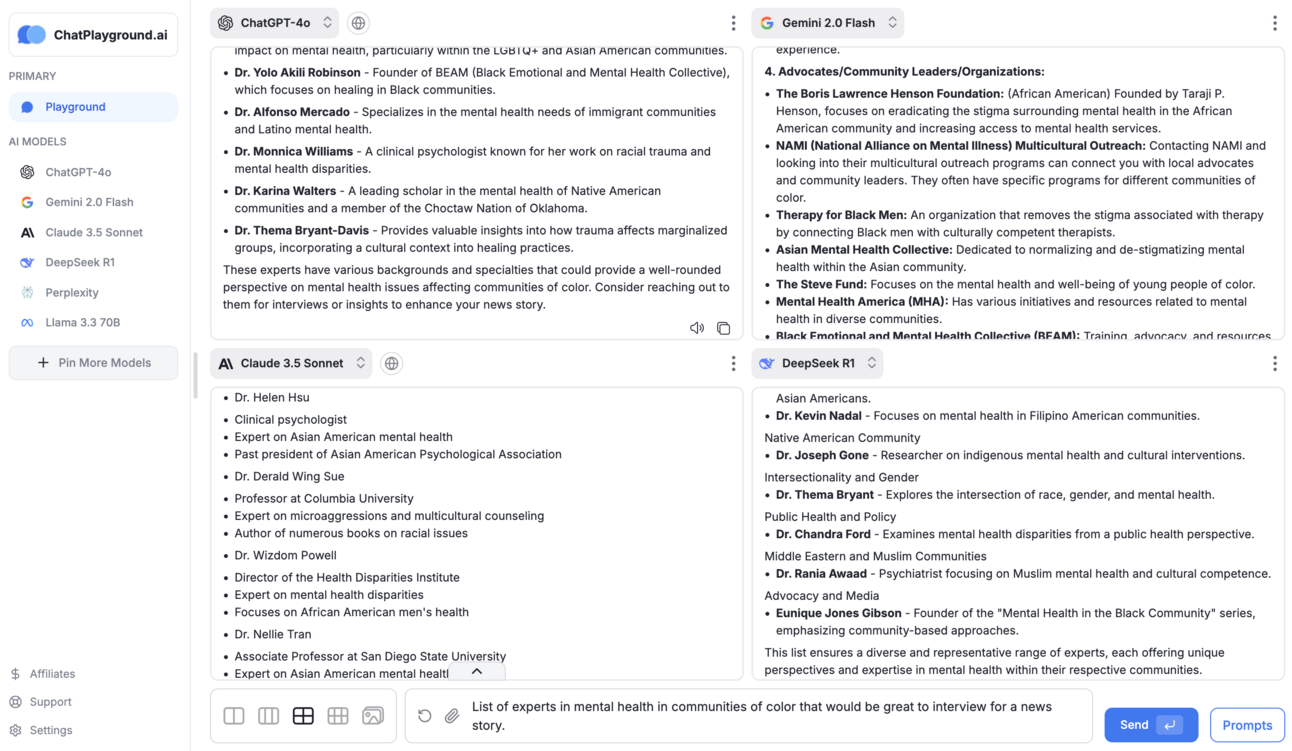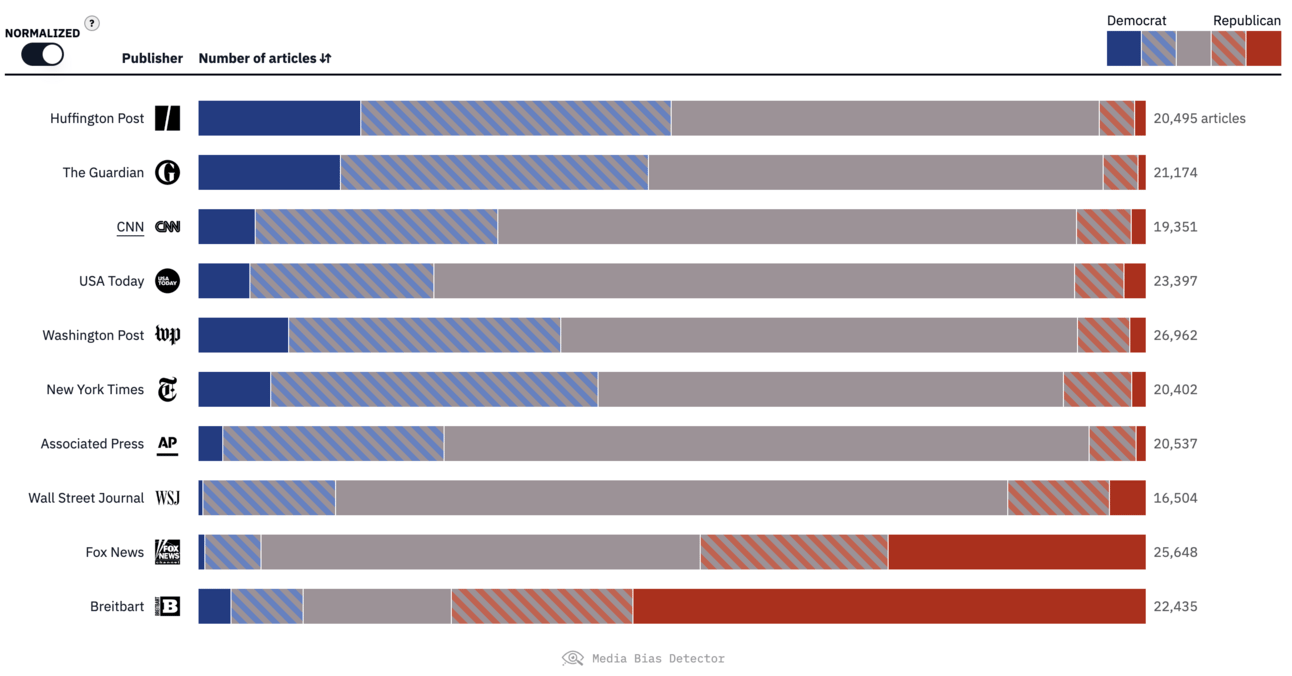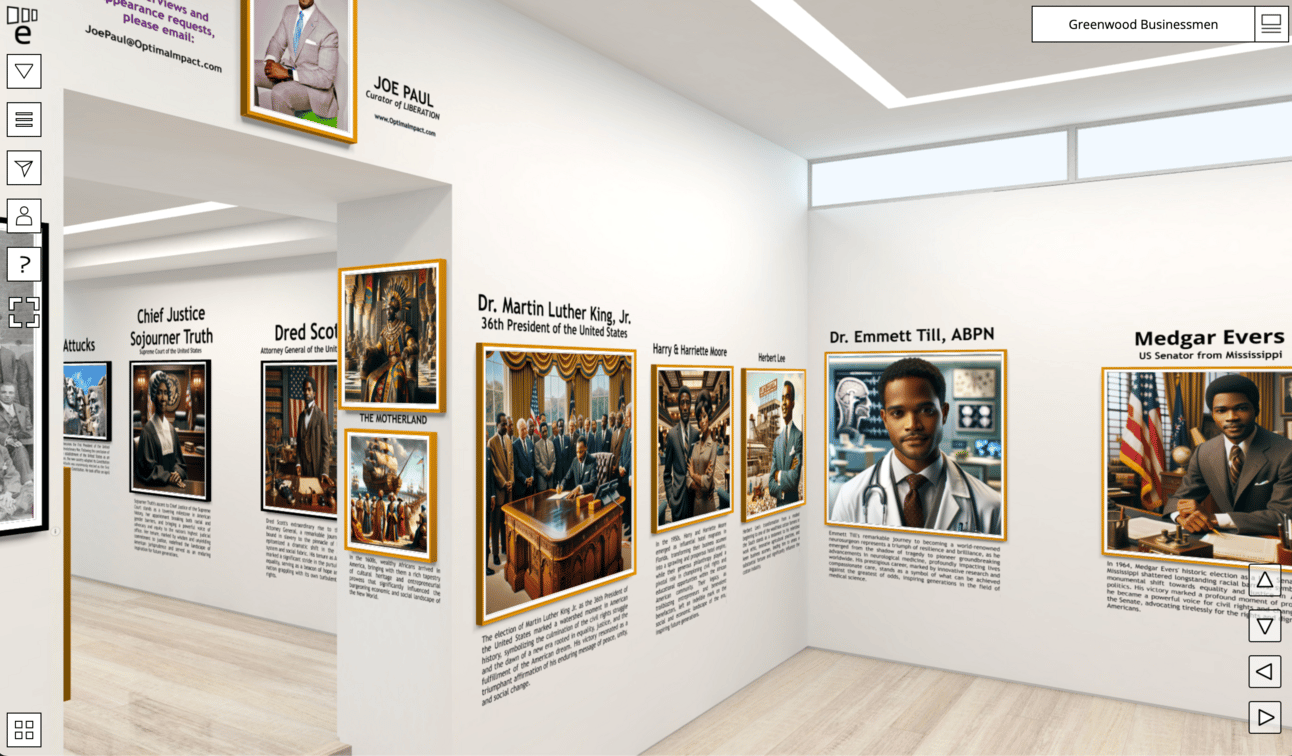- dots & dashes
- Posts
- Using AI bots to find real human sources
Using AI bots to find real human sources
Connect with new voices and discover more about your own.
On a wall near my desk at one of my former employers was a shiny acrylic circle with the phrase “Seek diverse perspectives.” emblazoned in bold letters. What once felt like run of the mill corporate talk is a mantra I’ve carried with me well into my career since I last worked under the sign.
Seeking diverse perspectives can be a challenge in journalism. The broader industry has been critiqued for a while now for relying on demographically homogeneous sources for reporting. Some go-to experts within various circles are interviewed many times over, despite there being a variety of voices that can speak to a given subject. A movement to diversify sources has been underway for years to counteract this ongoing issue.
AI can be a great tool for finding new sources to interview, especially if the subject matter you cover is very niche. In your AI platform of choice, you can enter a prompt like “Experts in mental health in communities of color that would be great to interview for a news story,” making sure you include context for why you are asking for the list which yields better results. Give it a try and see who you come with.
Speaking of diverse perspectives, rather than just entering your prompt into one AI tool, you can use ChatPlayground.ai to present your query to up to 4 platforms at the same time, including ChatGPT, Claude, and Gemini. I’ve found that there’s usually some overlap in the responses but what’s great is that with a few clicks, you’ve got a Rolodex (am I dating myself?) of sources to potentially reach out to. As all of the platforms in the example below denote, you should confirm the information for the listed experts is up to date and accurate before moving forward.

ChatPlayground.ai

“Ummm…” AI
Uses of AI in media that raise ethical questions
A core principle that many news professionals learn early in our careers is that journalists should always remain unbiased. Then, we learned that being truly unbiased is difficult because we are, after all, humans. But what if the entity checking the bias wasn’t human? Enter the movement of using AI to detect media bias in articles and across newsrooms.
If you want to check for potential bias for a story, you can enter your copy or the text of any news article into tools like YesChat AI’s Bias Detector for analysis. This particular tool outputs a summary of the copy, specific phrasing that may have biased connotations, the absence of information within that can lead to biased representation, and whether the article or parts of it skew negative or positive. The Bias Checker by &samhoud takes a somewhat different approach to bias in copy by pointing out issues like lack of context, unnamed sources, or alternative perspectives. The Media Bias Detector by the Penn Media Accountability Project takes a wider lens by looking at the overall output of news organizations. It uses AI and other markers to determine whether stories are conservative or liberal leaning.

Media Bias Detector
Here’s where the “ummm…” part comes in. AI is not actually impartial even though it is portrayed as such across many different industries. However unintentionally, bias can creep into all parts of the AI development process – from the demographics of the staff to the data the tech is trained on, and so on. While the tools mentioned here and others incorporate factors like human review, just like journalists, nothing and no one can truly be unbiased. What’s important is doing our best to recognize bias and to shift as appropriate when it manifests.

O.M.G. AI
Mind-bending uses of AI not usually appropriate for journalism but are nonetheless thought-provoking
“What if the brilliance of African American minds had been unshackled throughout history?”
It’s a fascinating question posed by Joe Paul, artist and creator of LIBERATION, a virtual museum that explores alternative timelines for Black history makers. What if Dr. Martin Luther King had become President of the United States? Who would Trayvon Martin or Emmett Till have grown up to be if they hadn’t been killed at a young age? What if Sojourner Truth became a Supreme Court Justice?
The digital exhibit imagines these speculative futures with AI-generated artwork along with gallery-style descriptions. The result presents a gripping question: What would Black History Month be if the narratives of Black people were different. The AI of it all aside, the presentation itself is emotionally captivating, a common hallmark of great journalism.

LIBERATION

Enjoying dots & dashes? Share with a colleague or friend! Have feedback or questions? Email me at [email protected].